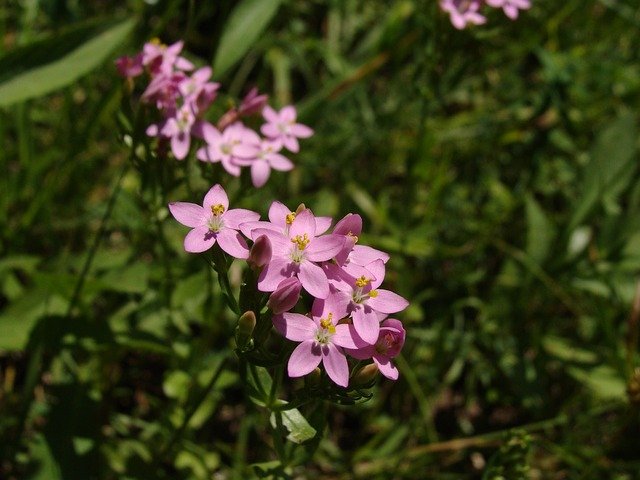
Centaurea (Centaurium erytraea) belongs to the Gentianaceae family. Note because it stimulates gastric secretion, it is useful in case of loss of appetite and difficult digestion. Let’s find out more.
Properties of centaurea
The flowering tops of the centaurea minor contain bitter substances, flavonoids, fatty acids and phenolic acids, triterpenes, sterols, traces of alkaloids, glycosides. Due to the presence of these active ingredients, the plant is used in phytotherapy to reactivate the secretion and motility of the digestive system, in all stomach disorders, linked to a gastrointestinal atony, which are manifested by difficult digestion, loss of appetite, painful dyspepsia with meteorism and liver failure.
How to use
INTERNAL USE
INFUSION: 1 tablespoon of centaurea flowering tops, 1 cup of water
Pour the plant into boiling water and turn off the heat. Cover and leave to infuse for 5 min. and drink after meals to take advantage of the digestive action
– Mother tincture of centaurea: 30 drops in a little water twice a day before or after main meals.
Contraindications
Centaurea is contraindicated in pregnancy and lactation; overdose causes irritation to the digestive tract, vomiting and diarrhea.
Description of the plant
Annual or biennial herbaceous plant, hairless, 10 – 60 cm tall and with taproot. The stem erect, hairless, tetragonal; generally solitary it is branched in the apical part with branches appressati. The basal leaves are light green, forming a persistent rosette with a short petiole and oblanceolate or elliptical in shape and have parallel veins. The terminal corymb inflorescence is flattened with mullioned and leafy tops. The flowers have a color that can vary from pale or intense pink (rarely white), funnel-shaped with corolline tube passing the calyx. The fruit is a cylindrical capsule of about 10 mm, surpassing the calyx and with 2 loggias. The seeds are small and brown with characteristic retitate relief.
The habitat of the centaurea
Native to Europe, Western Asia and North Africa. It is located from the sea to the low mountains, in the meadows.
Background

The name of the genus centaurium has origins attributable to the centaur Chiron, a mythological figure closely connected to the world of medicine, dressing, herbs and medicinal substances. It is said that Chiron used this plant to heal a wound to his foot, inflicted on him by mistake by Hercules, who had hit him with a poisoned arrow, during his fight against the centaurs. The name of the species comes from the Greek erytros which means “red” with allusion to the color of its flowers.
The centaurea was already known to Pliny and Dioscorides (I century d.C), and the latter mentions it in his work De Materia Medica. It was also much appreciated by the Gauls who used it as an antidote against all poisons.
In folk medicine the plant is used for its febrifuge action as a substitute for quinine in the treatment of fever and malaria. Because of its very bitter taste, in some traditions it is called fel terrae, that is, “gall of the earth“.
During the Middle Ages it was widely cultivated, for its therapeutic virtues, especially by the Gaulish peoples. The pounded green leaves were used to disinfect sores and as a healing agent.
Today it is also used for the preparation of liqueur called vermuth, with stimulating effects on gastric secretion.






